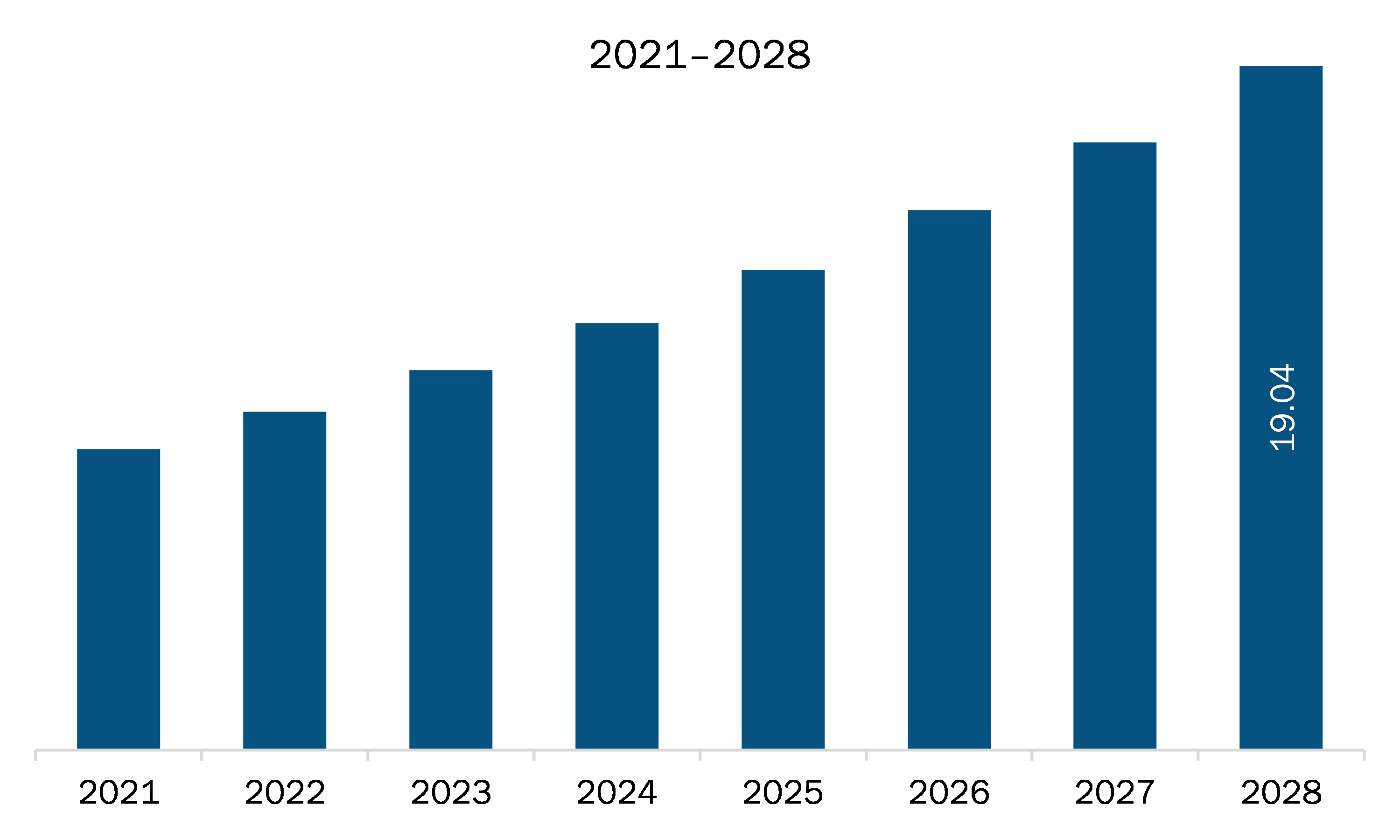The South and Central America pharmaceutical robots market is expected to grow from US$ 8.38 million in 2021 to US$ 19.04 million by 2028; it is estimated to grow at a CAGR of 12.4% from 2021 to 2028.
In recent years, there have been considerable developments in the field of robotics. Robotics offers automation in various pharmaceutical manufacturing processes, such as filling, packaging, and inspection. A few benefits of automation in pharmaceutical manufacturing are improving efficiency in manufacturing, decreasing labor cost, reducing time used for training labors, protecting employees from a hazardous environment, and eliminating the chances of human errors and human contamination. Selective Compliance Assembly Robot Arm (SCARA) robots are used for common pick and place operations. Delta robots are also preferred for high-speed picking and packaging. Parallel robots are used for dispensing, kit assembly, sorting, and light machine tending applications. The pharmaceutical industry has realized the potential of robots for diverse applications in the manufacturing process. Pharmaceutical company benefits from robotic process automation (RPA) because it assists management in formulating strategies in real-time based on consumption trends and other regulatory changes. With the support of cameras on the production line, QualViz processes the information through deep learning and computer vision. As a result, this approach assures that the color, size, and form of each pill on the production line are checked. Thus, the use of robots in the pharmaceutical industry helps improve the overall product quality and speeds up the entire process of production, which enables the industry to meet the ever-growing demand for new drugs. Hence, the benefits offered by robots in the pharmaceutical industry drive the growth of the South and Central America pharmaceutical robots market.
South and Central America is facing significantly challenging situations due to COVID 19 pandemic. Moreover, an increasing number of researchers have initiated the process of building industrial systems that deal with compound robotic tasks. One of the applications of the next generation of robotics is the automated packing of parts in an assembly process. Furthermore, automation is enhancing the demand for automated packaging systems and key players are taking strategic initiative to meet the demand. For instance, November 19, 2020, Equashield announced its expansion in Latin America through its partnership with SynTronic Hospitalar, to introduce Equashield products to Brazil. This includes both Equashield’s flagship Closed System Transfer Device, as well as EQUASHIELD Pro, the world’s first CSTD-enabled automated compounding system. The expansion follows the previous introduction of Equashield’s products to healthcare organizations in Chile and Panama. Thus, it has been concluded that the factor may raise the demand of pharmaceutical robots in market.

- This FREE sample will include data analysis, ranging from market trends to estimates and forecasts.
South and Central America Pharmaceutical Robots Market Segmentation
- South and Central America Pharmaceutical Robots Market – By Product
- Collaborative Pharmaceutical Robots
- Traditional Robots
- South and Central America Pharmaceutical Robots Market – By Application
- Inspection of Pharmaceutical Drugs
- Laboratory Applications
- Picking and Packaging
- South and Central America Pharmaceutical Robots Market – By End User
- Pharmaceutical Companies
- Research Laboratories
- Contract Research Organizations
- South and Central America Pharmaceutical Robots Market – By Country
- Brazil
- Argentina
- Rest of Central America
South and Central America Pharmaceutical Robots Report Scope
| Report Attribute | Details |
|---|---|
| Market size in 2021 | US$ 8.38 Million |
| Market Size by 2028 | US$ 19.04 Million |
| CAGR (2021 - 2028) | 12.4% |
| Historical Data | 2019-2020 |
| Forecast period | 2022-2028 |
| Segments Covered |
By Product
|
| Regions and Countries Covered |
South and Central America
|
| Market leaders and key company profiles |
|
- Historical Analysis (2 Years), Base Year, Forecast (7 Years) with CAGR
- PEST and SWOT Analysis
- Market Size Value / Volume - Regional, Country
- Industry and Competitive Landscape
- Excel Dataset
Recent Reports
Testimonials
Reason to Buy
- Informed Decision-Making
- Understanding Market Dynamics
- Competitive Analysis
- Identifying Emerging Markets
- Customer Insights
- Market Forecasts
- Risk Mitigation
- Boosting Operational Efficiency
- Strategic Planning
- Investment Justification
- Tracking Industry Innovations
- Aligning with Regulatory Trends





















 Get Free Sample For
Get Free Sample For